Burns
Burns are traumatic injuries to the skin caused by thermal or other acute exposures. In burn injuries, skin cells and other tissues are damaged by exposure to mechanical friction, heat, electrical discharge, chemicals, or radiation.
Burn Mechanisms
Heat
The extent of a burn injury depends on the following factors:
- Temperature
- Duration of contact
- External heat sources
- Thickness of the affected skin
The most common skin sites of burn injury are the epidermis and part of the dermis. The most common causes of heat-related burns include flames, hot liquids, hot solid objects, and steam.
Electrical Discharge
When an electrical current passes through the body, it is converted into heat because the body has poorly conducting tissues. The extent of the injury depends on the path, resistance, strength, and duration of the electrical current flowing through the tissues.
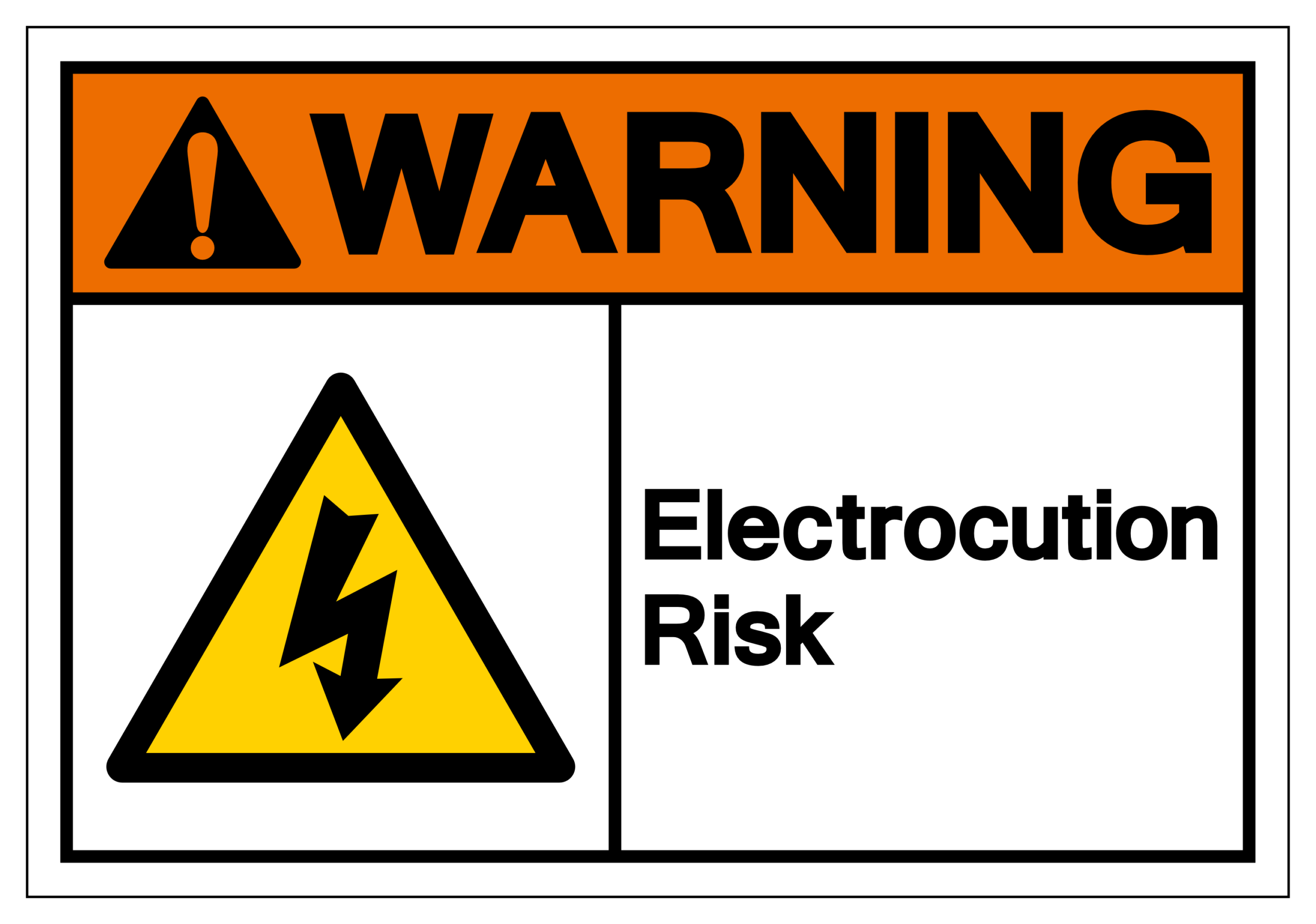
Electrical discharge can cause a burn injury.
Friction
Mechanical friction disrupts the cells of the skin and generates heat, which causes burn injuries.
Chemicals
Causes of chemical burns that disrupt the integrity of the skin include:
- Caustic reactions
- Direct toxic effects on metabolic processes
- Alterations in pH
The severity of the burn depends on contact time, the chemical, and the chemical’s nature. For example, exposure to acid (low pH) causes coagulation necrosis, while alkaline (high pH) causes liquefaction necrosis.
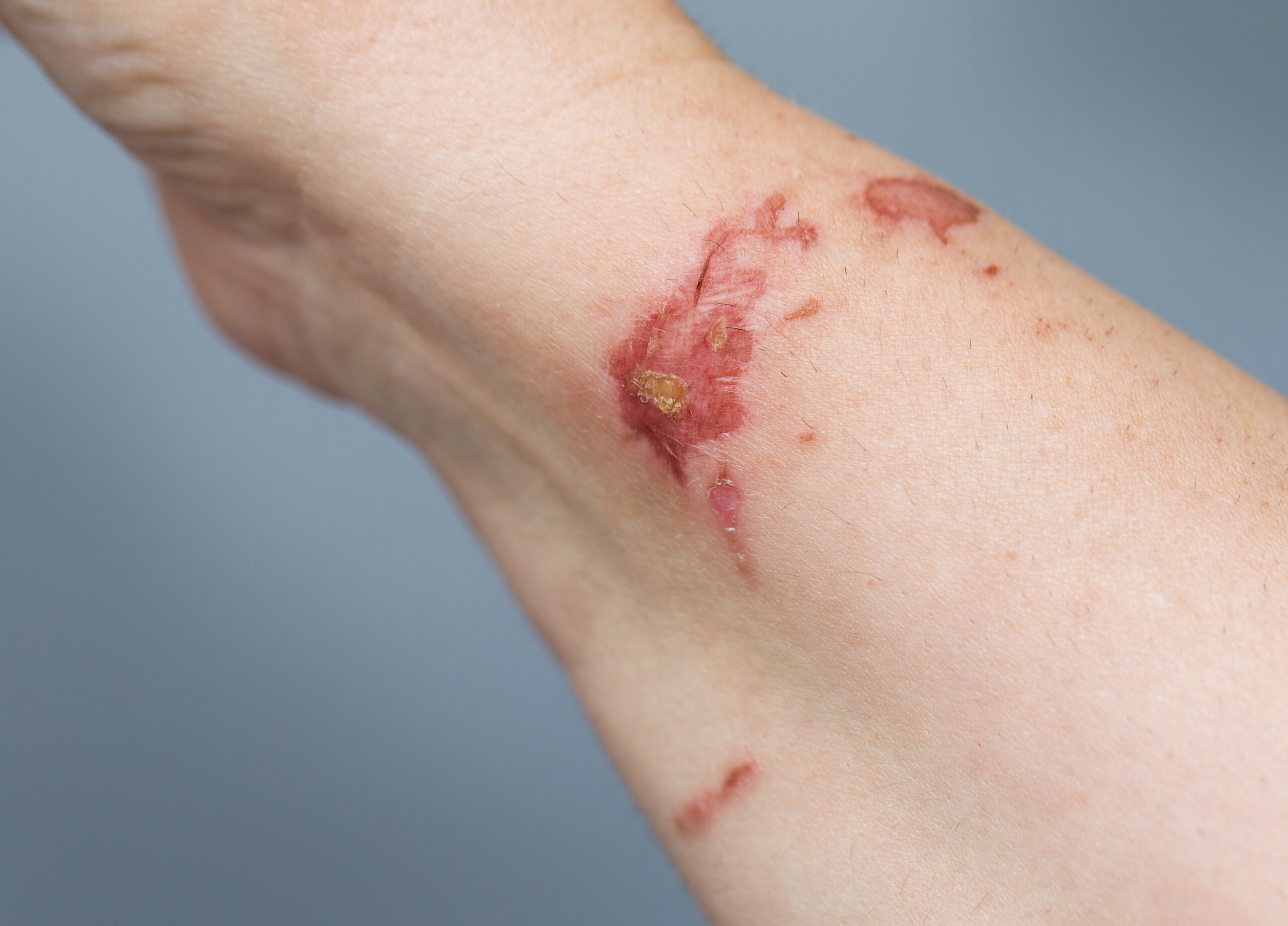
Chemical Burn on Person’s Wrist.
Radiation
Ionizing radiation causes direct damage to skin cells as well. A common type of radiation burn is sunburn, which is caused by the effects of ultraviolet light. Other causes of radiation burns are from radiotherapies for cancer.
The dose, time of exposure, and type of ionizing radiation affect the extent of the burn injury.
Definition Based on the Depth of Burn Injuries
Superficial (First-Degree Burn)
Superficial burn injuries involve only the epidermal layer, which is the outer skin layer. They do not blister but are painful, dry, reddish in color, and blanch when pressure is applied.
Superficial Partial-Thickness (Second-Degree Burn)
Superficial partial-thickness burns involve the epidermis and some parts of the underlying dermis. This type of burn can form blisters within 24 hours of injury. These are painful, red, and weeping burn injuries that blanch when pressure is applied.
Deep Partial-Thickness (Third-Degree Burn)
Deep partial-thickness burns are burn injuries that extend deeper into the dermis and can damage hair follicles and glands. They are only painful if pressure is directly applied to the injured area. They form blisters that are easily unroofed. They can be wet or waxy dry and appear mottled from patchy white to reddish. They do not blanch when pressure is applied. Deep partial-thickness burns cause hypertrophic scarring that can affect movement when the area around a joint is involved.
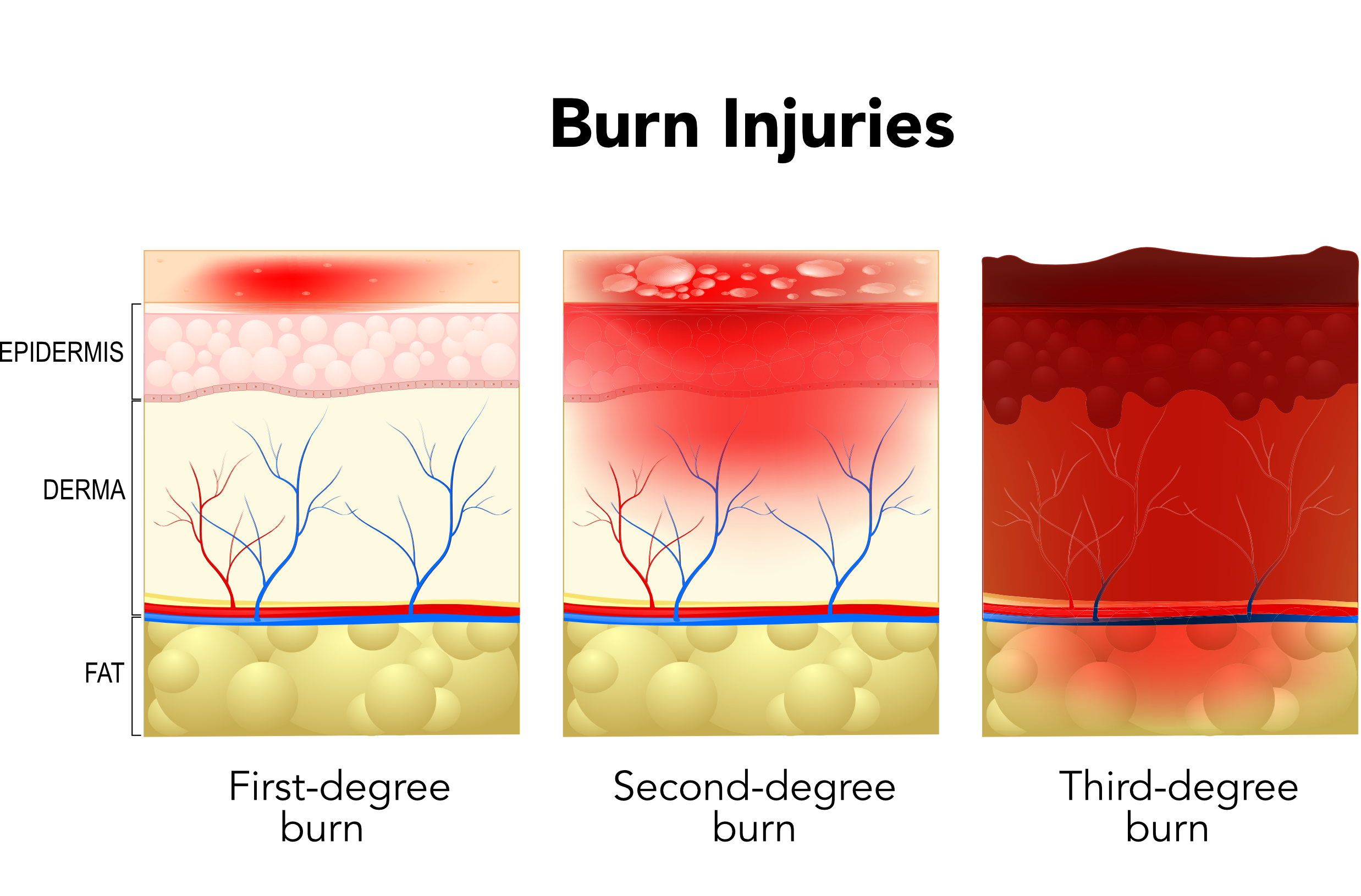
Degrees
Full-Thickness with Deep Extension (Fourth-Degree Burn)
Full-thickness burns affect the epidermis down to the entire layer of the dermis with an injury to the subcutaneous tissue. They destroy the skin and can extend to the muscles and bones. This is a life-threatening condition. They can form an eschar, which is the denatured sequelae of the dermis. It is a thick and tough tissue that can restrict movement if a limb or torso is affected.
There is very little to no sensation felt in full-thickness burns. They can appear as waxy white to leathery gray or charred, dry and inelastic, and no vesicles or blisters develop.
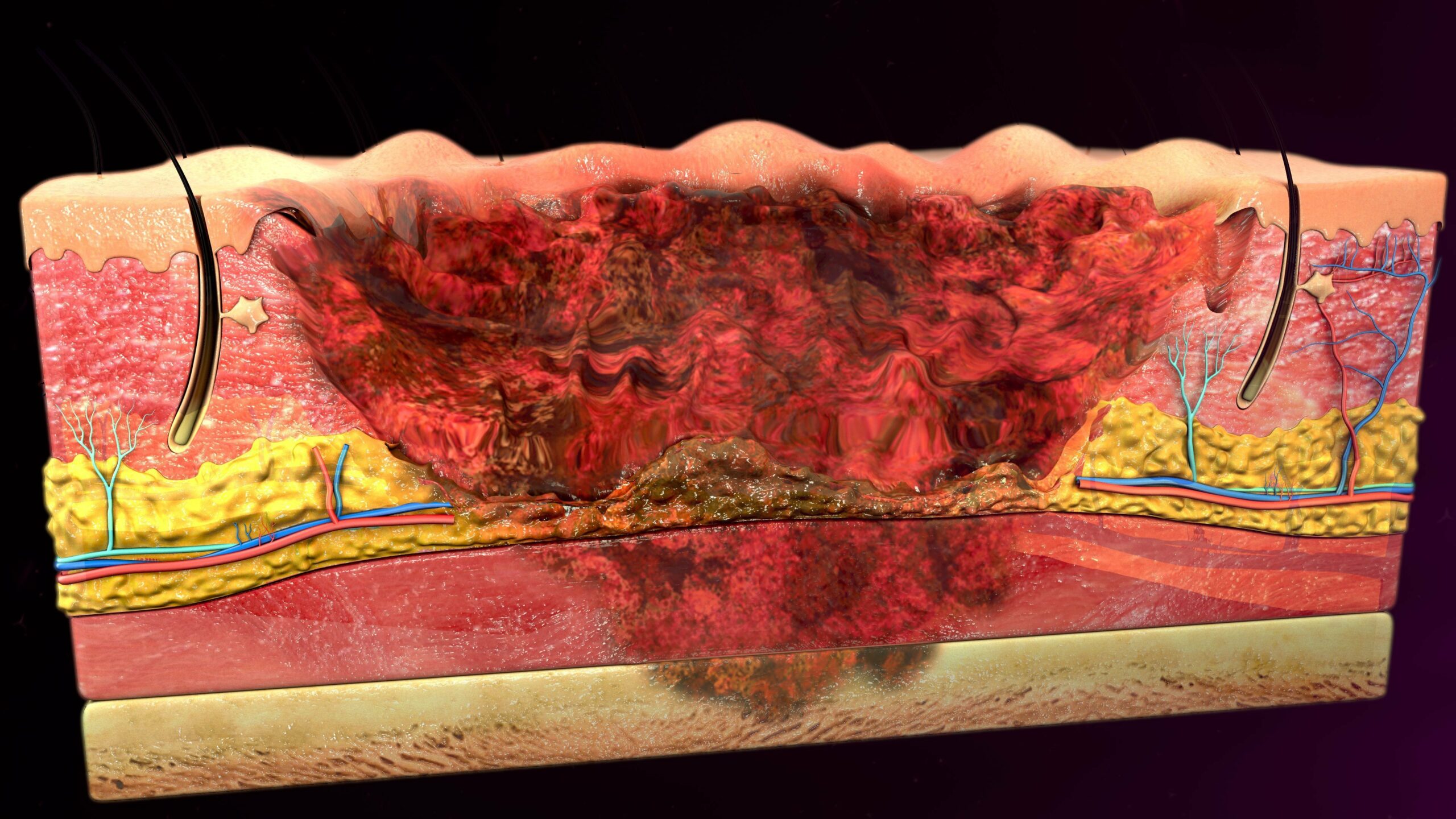
Full-Thickness Burn
First Aid Interventions for Burns
Superficial and Partial Superficial Skin Burn Treatment
Small superficial or superficial partial-thickness burns can be treated onsite. Deeper burns than these need to be evaluated by a healthcare provider in a healthcare facility.
Home treatment of burns involves the following steps:
- Cleaning the area – articles of burned clothing that are not stuck to the skin should be removed.
- The burned skin should be washed with cool tap water and plain soap. It is unnecessary to use disinfectants, such as alcohol, iodine, or other antiseptic solutions.
- The area should be cooled quickly (for about 15 minutes) to reduce pain and the extent of the burn. A cold compress can be applied, or it can be soaked in cool water. Using iced water or placing ice on the affected area may damage the skin further.
- Prevent infection – after cooling the area, an antibiotic cream such as Neosporin or bacitracin can be applied. If available, silver sulfadiazine cream is recommended. Other over-the-counter remedies such as aloe vera can also be applied. Household items such as mustard, egg whites, mayonnaise, lavender oil, emu oil, or toothpaste should not be applied.
- The burn injury can then be covered with a wound dressing. If blisters form, the injury should be covered by a non-stick bandage.
- Dressings can be changed once or twice a day. The burns can be kept clean by washing the area with soap and water and applying antibiotic cream.
- The blister(s) should not be popped with fingernails or foreign objects. These can introduce infections.
- Prevent inflammation – If the burn injury affects the limbs, they can be elevated above the level of the heart to prevent swelling. Over-the-counter anti-inflammatory medications such as ibuprofen can also be administered as needed. Topical anesthetics are not recommended for relieving pain because these items can further irritate the burn injury.
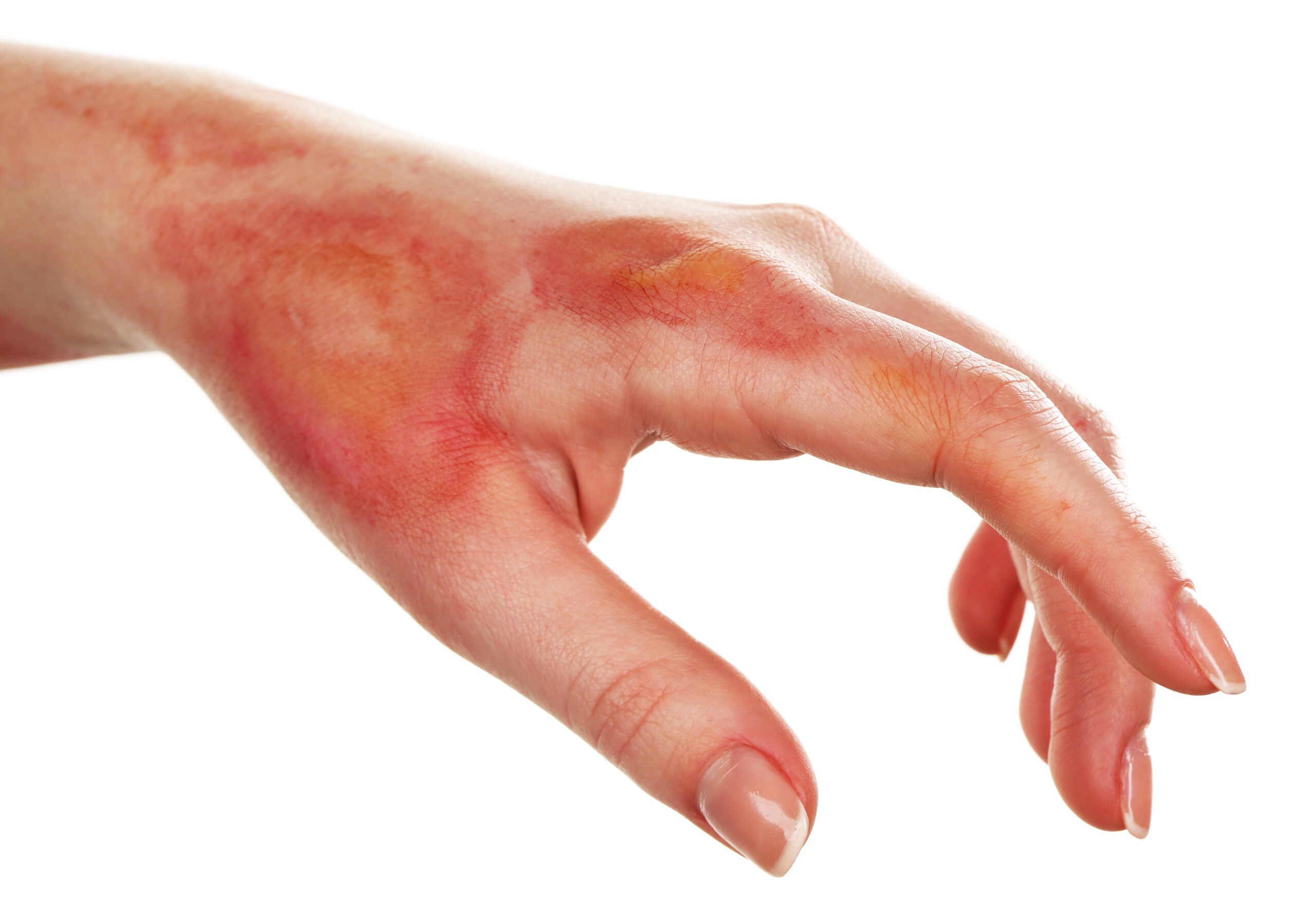
Minor Burn
The patient should follow up with a physician to assess the healing process of the burn injury. The physician may prescribe a tetanus vaccination to prevent tetanus infection.
Chemical Burns
Chemical burns are most often encountered in the industrial setting. They require individualized treatment, which depends on the causative agent. The extent of injury depends on the toxic agent’s potency and exposure or duration of contact before first aid is given.
In these cases, the responder must refer to the Material Safety Data Sheet (MSDS) for the causative agent to determine the proper treatment. If the first aid responder does not have access to the MSDS, they should immediately call the Poison Control Center for guidance.
The first aid responder must follow these general steps:
- Ensure protection of the responder from exposure and don the proper PPE to prevent contamination or injury.
- Remove the injured person from the exposure area.
- Remove all clothing and jewelry from the affected area(s).
- Brush off any dry chemicals with a towel or dry brush.
A critical intervention in treating chemical burns is copious irrigation with water on the affected skin exposed to the chemical agent, including the eyes and face if they are involved. Mild soap can be used to clean the exposed areas following irrigation. Irrigation is performed at the site of contamination.
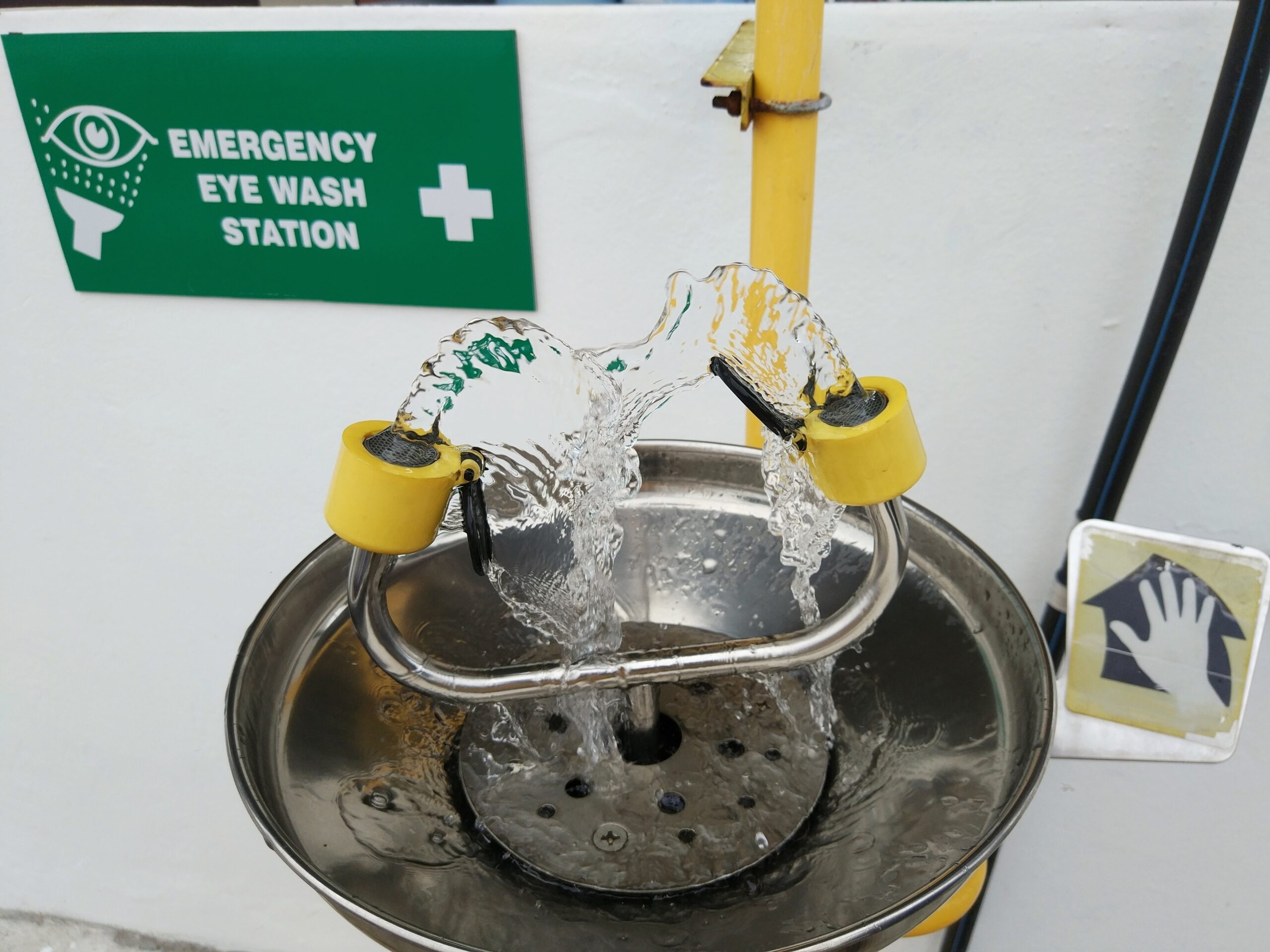
Eye Wash Station
Irrigation is NOT RECOMMENDED for the following chemical agents: dry lime, phenols, and elemental metals such as sodium, potassium, calcium oxide, magnesium, and phosphorus. Dry lime should be brushed off the skin before irrigation. When dry lime meets water, it turns into calcium hydroxide, which is a strong alkali. Elemental metals can combust when exposed to water. They must be removed by dry forceps and contained in a non-aqueous solution such as mineral oil. Once the metal is removed, the affected area of skin can be covered with the non-aqueous solution and then wiped off. It may be reapplied and wiped off once more until all the elemental metals are removed. Phenols are insoluble in water; a sponge soaked in 50% polyethylene glycol can wipe off phenols from the skin.
If the responder is unsure whether irrigation is recommended for a specific chemical, they should NOT irrigate the chemical burn since improper irrigation may increase the burning.
When a patient with a chemical burn is ready to be transported to a hospital, it is important that all responders who will enter the hospital be decontaminated. These institutions have their own decontamination protocols and decontamination areas.
Minor Sunburns and Electrical Burns
Superficial skin burns from sunburns can be treated with pain medications and over-the-counter sunburn treatment products. Applying cool soaks or compresses to the affected area helps. The sunburned individual must stay out of the sun until the redness and pain are completely resolved.
Likewise, minor electrical burns can also be treated with over-the-counter pain medications and cold compresses or cold soaks. In some cases, antibiotic treatments may also be necessary.